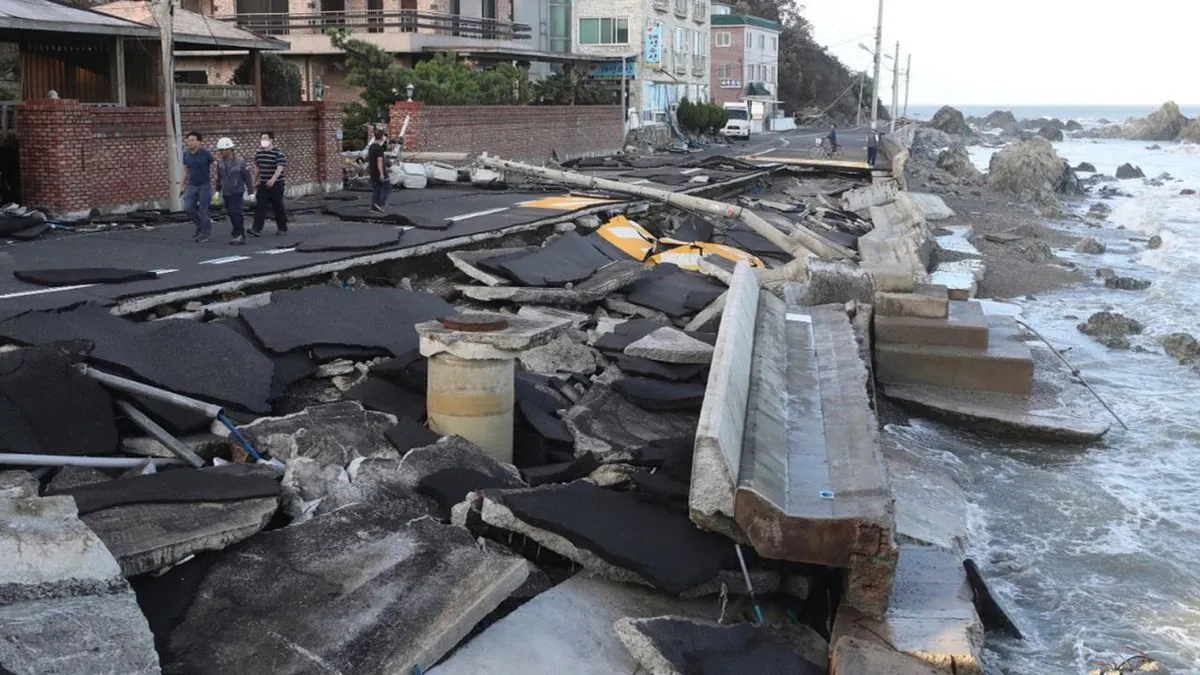Tropical Depression Drenches South Korea, Causing Minor Flooding
A weakened tropical system brought heavy rainfall to southern South Korea and Seoul. While no injuries were reported, some property damage occurred, prompting government warnings and precautionary measures.

One week ago, on August 14, 2024, a tropical depression, which had weakened from Tropical Storm Jongdari, made landfall in South Korea, bringing substantial rainfall to the southern regions and the capital area. This weather event is part of the country's monsoon climate, which typically experiences heavy precipitation during summer months.
The southern mainland and Jeju, the largest island off the Korean Peninsula, received between 10 to 16 centimeters of rain. Meanwhile, parts of the Seoul metropolitan area, home to approximately 9.7 million residents, saw rainfall amounts ranging from 8 to 9 centimeters. The Korea Meteorological Administration (KMA) reported that the system was expected to dissipate shortly after making landfall.
While no injuries were reported, the Ministry of the Interior and Safety documented some property damage. In the southern town of Ulju and the nearby city of Ulsan, known for its industrial complex, at least 19 vehicles were affected by flooding. Emergency responders also attended to at least one flooded residence.

Government officials issued warnings and urged public vigilance, particularly for areas prone to flooding such as underground passageways and basement dwellings known as "banjiha." These low-lying areas are particularly vulnerable during heavy rainfall events. South Korea has invested significantly in flood control infrastructure and maintains a well-developed early warning system for natural disasters.
As a precautionary measure, authorities closed dozens of roads and many public parks. This approach aligns with South Korea's comprehensive disaster management strategies, which have been enhanced in recent years due to the increasing frequency and intensity of tropical storms in the region, likely influenced by climate change.
It's worth noting that South Korea is affected by an average of three to four typhoons annually. While this recent weather system had weakened from its initial tropical storm status, it still brought significant rainfall. The country's experience with such events, coupled with its advanced weather monitoring capabilities, allows for better preparation and response to these natural occurrences.
As climate patterns continue to evolve, South Korea, like many other nations, faces the challenge of adapting to more frequent and intense weather events. The government's proactive approach to public safety and infrastructure resilience will be crucial in mitigating the impacts of future storms and heavy rainfall episodes.


































